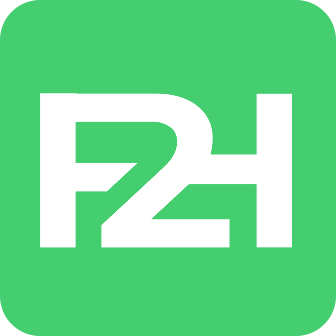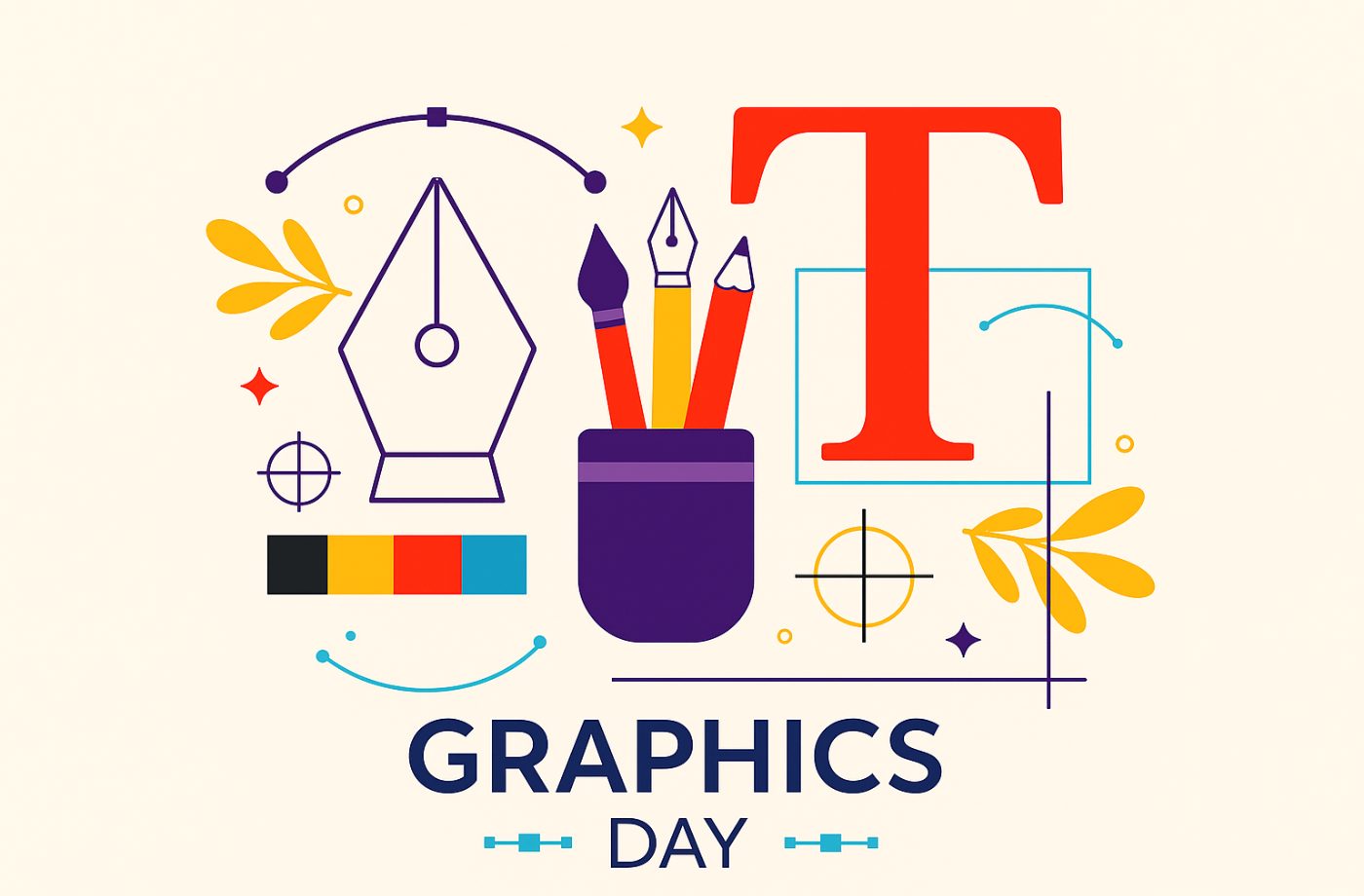We are Figma2html — a passionate and detail-oriented team of designers and developers. From UI/UX to fully functional websites, we craft quality digital experiences with a strong focus on communication, collaboration, and timely delivery. At the core of everything we do is a commitment to excellence and long-term client support.
25 Stunning Graphic Design Examples to Inspire Your Creativity
Every designer—whether a beginner, student, or seasoned professional—sometimes faces a creative block. The best way to overcome it? Study and learn from great graphic design examples that set the standard for creativity, storytelling, and execution.
Design is everywhere: from the posters on city streets to the app interfaces we use daily. What makes some designs unforgettable is not just their aesthetic, but their ability to communicate ideas effectively. By analyzing these examples, designers can sharpen their own style while drawing inspiration for future projects.
In this article, we’ll explore 25 stunning graphic design examples across posters, branding, digital campaigns, typography, and packaging. Along the way, you’ll see design principles in action, discover tips to apply them to your projects, and even learn how to recreate similar work using tools like Free Canva templates. Let’s dive into the world of creativity and inspiration.
Why Analyzing Graphic Design Examples Matters
Great design emerges from an understanding of context, problem-solving, and visual storytelling. Reviewing examples provides:
- Visual Benchmarking: You learn current trends and timeless design principles.
- Practical Inspiration: Spark ideas for your own design portfolio or client projects.
- Skill Application: Helps connect theory (typography, grids, color psychology) with real-world execution.
Tip: Keep a personal design inspiration folder. Save posters, digital ads, or UI mockups you admire; review them before starting new projects.
25 Stunning Graphic Design Examples
Here’s a diverse set of 25 examples across different categories:
1. Bold Typography Posters
Simple typography-driven posters can say more than complex graphics. For instance, campaigns by fashion brands often use oversized type in minimal layouts.
Takeaway Tip: Pair bold sans-serif typography with high-contrast colors to achieve impact.
2. Minimalist Branding Logos
Brands like Apple and Nike prove the power of minimalism. A few lines and shapes can summarize an entire identity.
Tip: Focus on negative space and scalability when building logos.
3. Vintage-Inspired Packaging Design
Old-school typography and retro illustrations are making a comeback in packaging, especially in coffee or craft beer brands.
Tip: Use muted, earthy tones and hand-drawn elements for authenticity.
4. Gradient Web Design Backgrounds
Modern SaaS startups love colorful gradient backgrounds. They add vibrancy without distracting from central CTAs.
Tools: Canva or Figma come with gradient presets—perfect for web mockups.
5. Infographic Posters
Turning complex data into engaging visuals is vital. Infographic-style posters with icons, illustrations, and charts are widely shared online.
Tip: Keep sections short with visual hierarchy.
6. 3D Illustrations in Digital Interfaces
Many tech startups leverage soft 3D objects for websites. Rounded shapes make UIs friendly and futuristic.
Tip: Tools like Blender or ready-made 3D packs can lift a portfolio project.
7. Monochrome Editorial Design
Magazines often use single-color tone spreads for sophistication, creating visual unity.
Tip: Monochrome doesn’t mean boring—play with texture and contrast.
8. Hand-Lettered Posters
Hand-drawing typography adds a human warmth no font can replicate. Great for event promotions like music festivals.
Tip: Scan your sketch; refine digitally with vector tools.
9. Social Media Graphics with Canva
Sometimes creativity = speed. Many entrepreneurs design using Free Canva templates for posts, ads, and stories—great examples of polished yet quick design.
Tip: Customize Canva templates to match brand identity, not just drag-drop.
10. Responsive Web Design Layouts
Modern websites adapt across screens. Clean grid-based, mobile-first design is essential.
Tip: Design responsively from the start, not as an afterthought.
11. Illustration-Based Branding
Airbnb once used playful illustrations in campaigns to humanize their message. Illustrations create emotional connection.
Tip: Mix illustrations with flat icons for modern appeal.
12. Cinematic Photography Posters
Movie or campaign posters with dramatic lighting grab attention instantly.
Tip: Use photography with high dynamic range; overlay subtle text for storytelling.
13. Motion Graphics Examples
Animations for landing pages keep users engaged. Small looping GIFs elevate static design.
Tip: Tools like After Effects or Canva animations are entry-friendly.
14. Hand-Drawn Art Portfolios
Illustrators often combine scanned sketches with digital enhancements. These hybrid portfolios emphasize raw talent.
Tip: Keep consistent style; balance traditional art with digital polish.
15. User-Friendly Icons
Minimal, universally understood icons often define UI clarity. Think of Google’s Material icons.
Tip: Ensure consistency in stroke weight, padding, and radius.
16. Magazine Collage Spreads
Layered photography + textures = vibrant lifestyle spreads.
Tip: Experiment with cut-out photos and bold lines for retro vibe.
17. Business Presentation Decks
Great graphic design examples aren’t limited to posters—pitch decks like Airbnb’s early investor slides highlight clarity and visual consistency.
Tip: Keep one idea per slide; focus on typography balance.
18. Eco-Friendly Packaging
Brands highlight sustainability by using earthy tones, natural textures, and eco-symbols in design.
Tip: Minimal ink and recyclable materials communicate responsibility.
19. Typography-Driven Branding
Brands like Glossier use type-first branding—simplicity conveys elegance.
Tip: Select modern, legible fonts and use generous whitespace.
20. Retro Pop Color Marketing Materials
Fluorescent color palettes channel ‘80s pop inspiration—great for trendy campaigns.
Tip: Use bold colors sparingly; balance with neutrals.
21. Augmented Reality Campaign Graphics
Digital-first campaigns include AR filters, merging physical with virtual.
Tip: Designing with interactivity in mind future-proofs your portfolio.
22. Poster Grids Inspired by Swiss Design
Clean Swiss International Style remains classic: strict grids, sans-serif, alignment.
Tip: Let structure guide, not cage, creativity.
23. Cultural Heritage Design Examples
Posters featuring indigenous art or cultural motifs honor identity and storytelling.
Tip: Credit origins respectfully and avoid clichés.
24. Futuristic Neon Designs
Gaming and cyberpunk genres thrive on neon palettes and sci-fi typography.
Tip: Use glow effects, dark backgrounds, and bold textures.
25. Creative Business Cards
Small in size, impactful in impression. Clever die-cuts, embossing, or typography can make a card unforgettable.
Tip: Always link digital contact details like QR codes.
What These Graphic Design Examples Teach Us
From typography-driven posters to packaging design, each example illustrates a core principle: effective communication.
- Bold typography = clarity.
- Minimalism = elegance.
- Interactivity = engagement.
- Cultural inspiration = connection.
Use these lessons as frameworks in creating your next projects.
Applying Inspiration with Free Canva Templates
While not every designer has time or tools for complex builds, platforms like Free Canva make it possible for entrepreneurs and students to try modern styles. Canva offers templates for:
- Posters
- Social media campaigns
- Portfolios
- Presentations
The key is customization: adapt templates to infuse your own originality.
Pitfalls to Avoid When Learning from Examples
- Blind Copying: Don’t replicate; reinterpret uniquely.
- Ignoring Context: What works for a poster may not suit an app interface.
- Unbalanced Inspiration: Too many design styles in one portfolio confuse employers.
Mini-Summary
We’ve reviewed 25 different graphic design examples, spanning posters, branding, packaging, and digital UI. These examples showcase timeless design principles—clarity, storytelling, balance, and innovation. By studying them, you train your eye, sharpen your skills, and build your personal style.
Conclusion – Turning Inspiration into Creation
Design inspiration fuels creativity, but success comes from execution. Whether you’re experimenting with Canva templates, sketching posters by hand, or crafting advanced UI mockups, apply lessons from great design examples in your own projects.
Your portfolio can—and should—be a unique reflection of your growth and passion. Use these examples not as templates to copy, but as sparks to fire up your originality. That’s how inspiration evolves into success.
FAQs
Posters, branding campaigns, packaging, and interactive digital designs are some of the most inspiring examples.
Platforms like Free Canva provide beginner-friendly templates you can customize to create polished designs.
Examples provide benchmarks, expose you to trends, and teach effective communication strategies you may not discover through practice alone.
Yes. Whether digital or traditional, many of these examples inspire storytelling and presentation approaches for art portfolios.
Students can use examples as inspiration but should create original projects. Direct copying lowers credibility.
Focus on principles: color palettes, typography hierarchy, storytelling—not just replicating visuals.
Yes, if you customize them deeply. Templates must be a starting point, not the final presentation.




